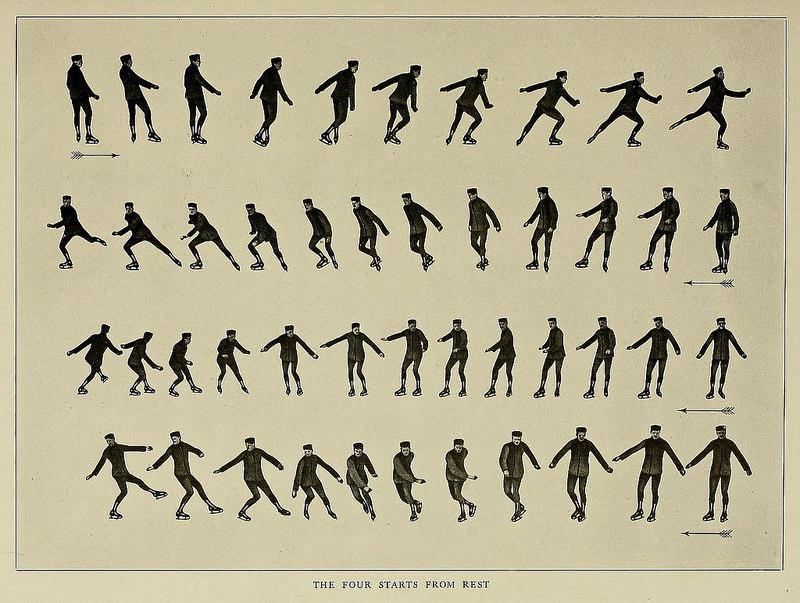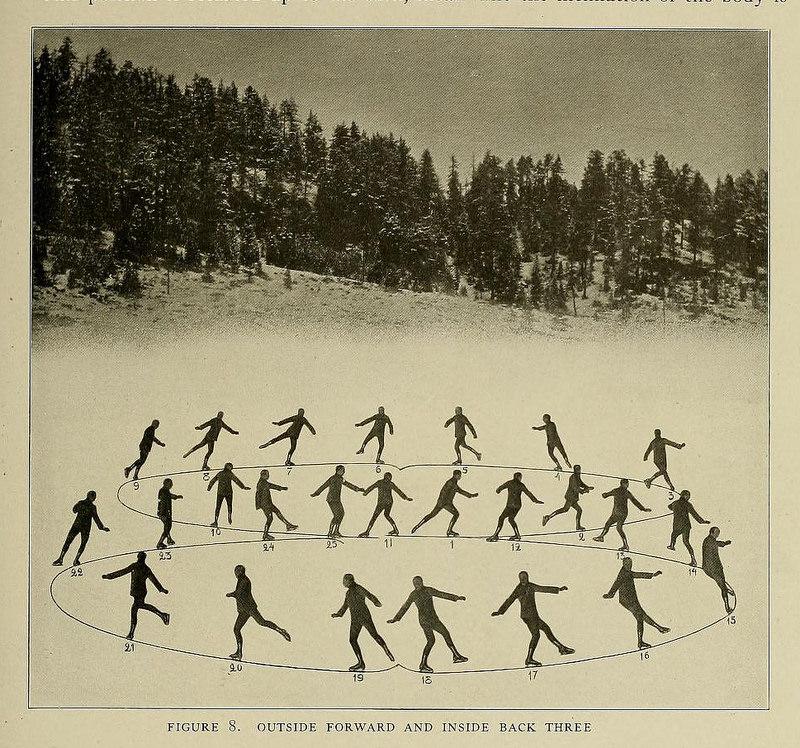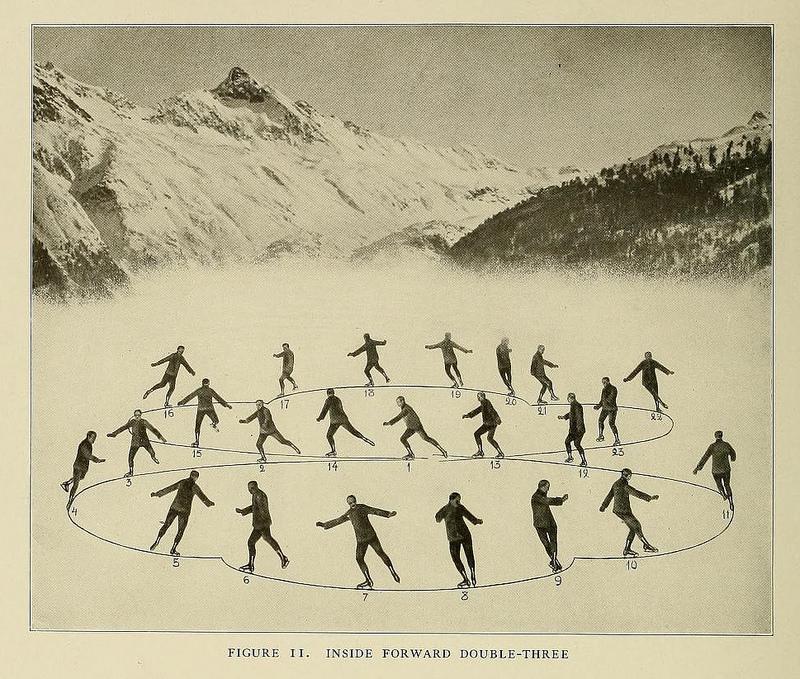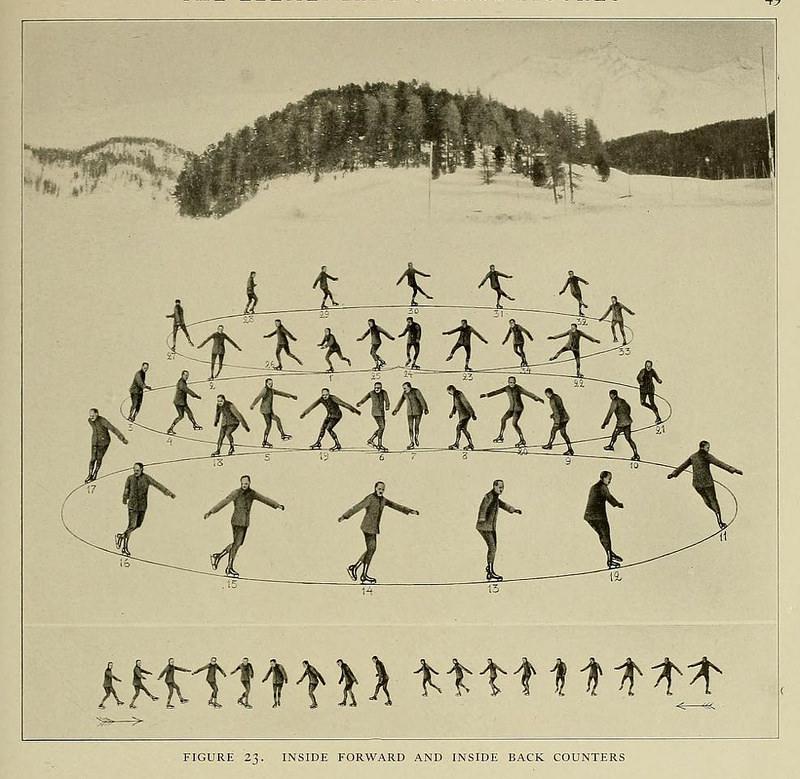In 1921, Bror Meyer, a Swedish figure skater who won a bronze medal in the World Championships in 1906, published a manual called Skating With Bror Meyer. Meyer illustrated his book with numbered diagrams, hoping that readers would follow the sequence of actions skaters performed while executing particular maneuvers.
The diagrams, Meyer wrote, were made with the help of a Cinematograph—a movie camera. Though he isn’t more specific about the origin of the camera, the name “Cinematograph” was copyrighted by the French filmmakers the Lumière Brothers in 1895. The Lumières’ camera was portable enough to be carried outdoors.
This method of capturing skating in motion had some drawbacks, Meyer acknowledged. Yet, he argued, the end result was pedagogically useful:
The disadvantages of this method (e.g. the relatively small photograph of the skater; occasional departures from the true perspective, displacement of proportion between the skater and the size of the figure) are far outweighed by the ability to show the whole figure which is being skated, with photographs closely following one another illustrating the changing positions of the skater.
Sequential diagrams like these could substitute for instructional films, in a time before many people had the ability to view and re-view moving images on demand.
I first saw these images on the website the Public Domain Review.

Internet Archive

Internet Archive

Internet Archive

Internet Archive

Internet Archive

Internet Archive

Internet Archive